Sensors already equip a range of tools to enhance monitoring capacity for conservation. Some of the higher bandwidth technologies, like camera traps and acoustic monitoring systems, have been essential elements of the conservation toolkit for decades, and thus have enough users that we've created dedicated WILDLABS groups to address them. But a whole range of lower bandwidth sensors beyond these core technologies are being increasingly integrated into conservation monitoring systems, and offer rich new insights into the wildlife and ecosystems we're all working to protect. As with many technologies, cost and access have historically been challenges to the adoption of new sensors, but with low-cost and open-source solutions on the rise, we're excited to see what the future of this space holds.
Getting Started with Sensors:
- Watch Shah Selbe's Tech Tutors episode on scaling FieldKit, an open-source conservation sensor toolbox, from a project to a successful conservation tech product.
- Check out our Virtual Meetup about Low-Cost, Open-Source Solutions in conservation tech, including a talk by Alasdair Davies on the Arribada Initiative's work with thermal sensors in early warning systems.
- For a more in-depth introduction, watch the first video in our datalogger mini-series: Freaklabs: How do I get started with Arduino?
In this group, you'll meet others who are using and innovating diverse sensors in their work, discuss ways to make sensors more effective & accessible for conservationists, learn about what sensors are already helping us accomplish in the field, and have the opportunity to ask and answer questions. Join this group to get started!
Header image: Emma Vogel, University of Tromsø
No showcases have been added to this group yet.
WILDLABS & Wildlife Conservation Society (WCS)
I'm the Bioacoustics Research Analyst at WILDLABS. I'm a marine biologist with particular interest in the acoustics behavior of cetaceans. I'm also a backend web developer, hoping to use technology to improve wildlife conservation efforts.





- 40 Resources
- 38 Discussions
- 33 Groups
- @YvanSG
- | he/him
Clemson University
Seabird ecologist at Clemson University, South Carolina Cooperative Fish and Wildlife Research Unit. Co-chair of Caribbean Seabird Working Group. Porteur de béret occasionel.



- 0 Resources
- 62 Discussions
- 7 Groups
- @carlybatist
- | she/her
ecoacoustics, biodiversity monitoring, nature tech



- 113 Resources
- 361 Discussions
- 19 Groups
- @Kyle_Birchard
- | He/Him
Building tools for research and management of insect populations
- 0 Resources
- 0 Discussions
- 6 Groups
- @TaliaSpeaker
- | She/her
WILDLABS & World Wide Fund for Nature/ World Wildlife Fund (WWF)
I'm the Executive Manager of WILDLABS at WWF



- 23 Resources
- 64 Discussions
- 31 Groups
- @bluevalhalla
- | he/him
BearID Project & Arm
Developing AI and IoT for wildlife





- 0 Resources
- 55 Discussions
- 8 Groups
- @CourtneyShuert
- | she/her
I am a behavioural ecologist and eco-physiologist interested in individual differences in marine mammals and other predators



- 0 Resources
- 12 Discussions
- 10 Groups
WILDLABS & Fauna & Flora
I'm the Platform and Community Support Project Officer at WILDLABS! Speak to me if you have any inquiries about using the WILDLABS Platform or AI for Conservation: Office Hours.



- 30 Resources
- 41 Discussions
- 6 Groups
- @jennamkline
- | She/Her
Imageomics Institute & ABC Global Climate Center
PhD Student @ OSU, Edge AI for Adaptive Animal Ecology Field Studies


- 0 Resources
- 7 Discussions
- 6 Groups
DIY electronics for behavioral field biology



- 7 Resources
- 82 Discussions
- 4 Groups
- @Jeorgiopierre
- | Him he his
Field researcher and systems designer operating a mobile apicultural laboratory focused on the study of terroir-specific variation in bee-derived products. Through Apis Nomadica Labs, I deliver pollination services to regional farms while simultaneously collecting ecological data
- 0 Resources
- 1 Discussions
- 10 Groups
- @Lysa001
- | she/her
Conservation Biologist
- 0 Resources
- 0 Discussions
- 15 Groups
The Marine Innovation Lab for Leading-edge Oceanography develops hardware and software to expand the ocean observing network and for the sustainable management of natural resources. For Fall 2026, we are actively...
24 July 2025
In this case, you’ll explore how the BoutScout project is improving avian behavioural research through deep learning—without relying on images or video. By combining dataloggers, open-source hardware, and a powerful...
24 June 2025
PhD position available at the University of Konstanz in the Active Sensing Collective Group!
28 March 2025
We are hiring for a customer support / marketing specialist.
20 February 2025
Osa Conservation is launching our inaugural cohort of the ‘Susan Wojcicki Research Fellowship’ for 2025, worth up to $15,000 per awardee (award value dependent on project length and number of awards given each year)....
10 February 2025
New paper - "acoupi integrates audio recording, AI-based data processing, data management, and real-time wireless messaging into a unified and configurable framework. We demonstrate the flexibility of acoupi by...
7 February 2025
The Conservation Technology Laboratory within the Population Sustainability department is seeking two fellows for summer 2025
5 February 2025
Conservationists use tools like drones, satellites, and camera traps to monitor ecosystems and scale their impact. But new challenges like transparency, funding gaps, and engagement remain. Web 3.0 technologies offer...
28 January 2025
The worst thing a new conservation technology can do is become another maintenance burden on already stretched field teams. This meant Instant Detect 2.0 had to work perfectly from day 1. In this update, Sam Seccombe...
28 January 2025
The Zoological Society of London's Instant Detect 2.0 is the world's first affordable satellite connected camera trap system designed by conservationists, for conservationists. In this update, Sam Seccombe describes the...
21 January 2025
Over the years, a large number of developments have gone up in the area that I live in and the municipality is not doing what they should when it comes to upholding the laws that have been put in place to protect the...
20 January 2025
August 2025
event
September 2025
event
March 2026
January 2025
event
17 Products
Recently updated products
121 Products
3 R&D Projects
84 Organisations
Recently updated products
Recently updated R&D Projects
Recently updated organisations
| Description | Activity | Replies | Groups | Updated |
|---|---|---|---|---|
| G-DiNC 2026: Global Drones in Nature Conservation Symposium & ExpoNairobi & Naivasha, Kenya | March 3–6,... |
|
Drones, AI for Conservation, Conservation Tech Training and Education, Emerging Tech, Marine Conservation, Sensors | 4 weeks ago | |
| Hi Ana,Savannah Tracking Ltd, based in Kenya, exclusively provides tracking and IT solutions for wildlife research, management and conservation projects worldwide.We offer a range... |
+4
|
Sensors | 4 weeks 1 day ago | |
| Yes, thanks Riley and Kim. Someone suggested WIS and I am currently in discussions with them. Their system seems especially well suited for the purpose and I am hoping it works... |
|
AI for Conservation, Emerging Tech, Sensors | 1 month 1 week ago | |
| I create ocean exploration and marine life content on YouTube, whether it be recording nautilus on BRUVs, swimming with endangered bowmouth... |
|
Acoustics, AI for Conservation, Animal Movement, Camera Traps, Citizen Science, Drones, Emerging Tech, Marine Conservation, Sensors, Sustainable Fishing Challenges, Wildlife Crime | 1 month 2 weeks ago | |
| Gina- Sounds like an interesting thesis topic! I work with bioacoustics in offshore waters and I'd be happy to have a chat and provide feedback-- feel free to message me via... |
|
Emerging Tech, Acoustics, Connectivity, Marine Conservation, Sensors | 2 months ago | |
| Hello, could you please elaborate on what the purpose of this project is? Thanks a lot :) Lukas |
|
AI for Conservation, Emerging Tech, Sensors | 2 months ago | |
| Hi, My name is Gina. I'm currently working on my Bachelor's Thesis and would like some feedback on my final concept. It is a ... |
|
Acoustics, Emerging Tech, Marine Conservation, Sensors, Women in Conservation Tech Programme (WiCT) | 2 months ago | |
| Hi CourtneyNothing off-the-shelf. A colleague is talking to e-obs about developing this capability but I don't think it's there yet. There are some Bluetooth-transmitting... |
|
Sensors | 2 months 1 week ago | |
| True, the US ecosystem is a challenging space right now, for basically all sectors. We should not let the US chaos prevent us from engaging with opportunities in other... |
|
AI for Conservation, Camera Traps, Connectivity, Drones, Emerging Tech, Ethics of Conservation Tech, Marine Conservation, Sensors | 3 months 3 weeks ago | |
| Thanks Phil - I have e-mailed you.Peter |
|
Animal Movement, Sensors | 3 months 1 week ago | |
| One of our goals with explorer.land is to bridge satellite data and on-the-ground perspectives — helping teams combine field updates,... |
|
AI for Conservation, Geospatial, Open Source Solutions, Sensors | 3 months 3 weeks ago | |
| Hi WILDLABS Community,I’m Simon Juma from Kenya, working on a project to track and manage Red-billed Quelea birds, which... |
|
AI for Conservation, Sensors | 4 months 3 weeks ago |
Tech4Nature Presents: 2025 Innovation Challenge Workshop Series - Registration Now Open!
6 August 2025 5:09pm
Tech4Nature Presents: 2025 Innovation Challenge Workshop Series - Registration Now Open!
6 August 2025 5:08pm
MS and PhD Opportunities in Ocean Engineering and Oceanography (Fall 2026)
24 July 2025 5:55am
G-DiNC 2026: Global Drones in Nature Conservation Symposium & Expo
16 July 2025 10:18am
G-DiNC 2026: Global Drones in Nature Conservation Symposium & Expo
16 July 2025 10:11am
Lion collars LoRaWan
24 May 2023 8:10am
13 July 2025 4:54pm
Hi Stephan,
Our TagRanger system would be an ideal solution for this project. TagRanger is based around LoRaWAN and allows you to pop up your own ad hoc Tag network anywhere, with a lot of features for tracking and finding Tags.
Our handheld 'Finder' device is your 'network', and pairs with your phone to map Tag positions and journey paths while also giving you live access to Tag positioning with 'ranging' capability to allow you to home in on your Tag when you want to find it.
TagRanger can also be integrated seamlessly to an existing fixed LoRaWAN network if you have one available.
We also have a capability to put 'relay' devices on a drone, mast or other high point to massively increase range or to mitigate issues with forest/jungle/hills blocking coverage.
We can provide customised housings for any application and battery size so please let me know if you'd like to discuss options.

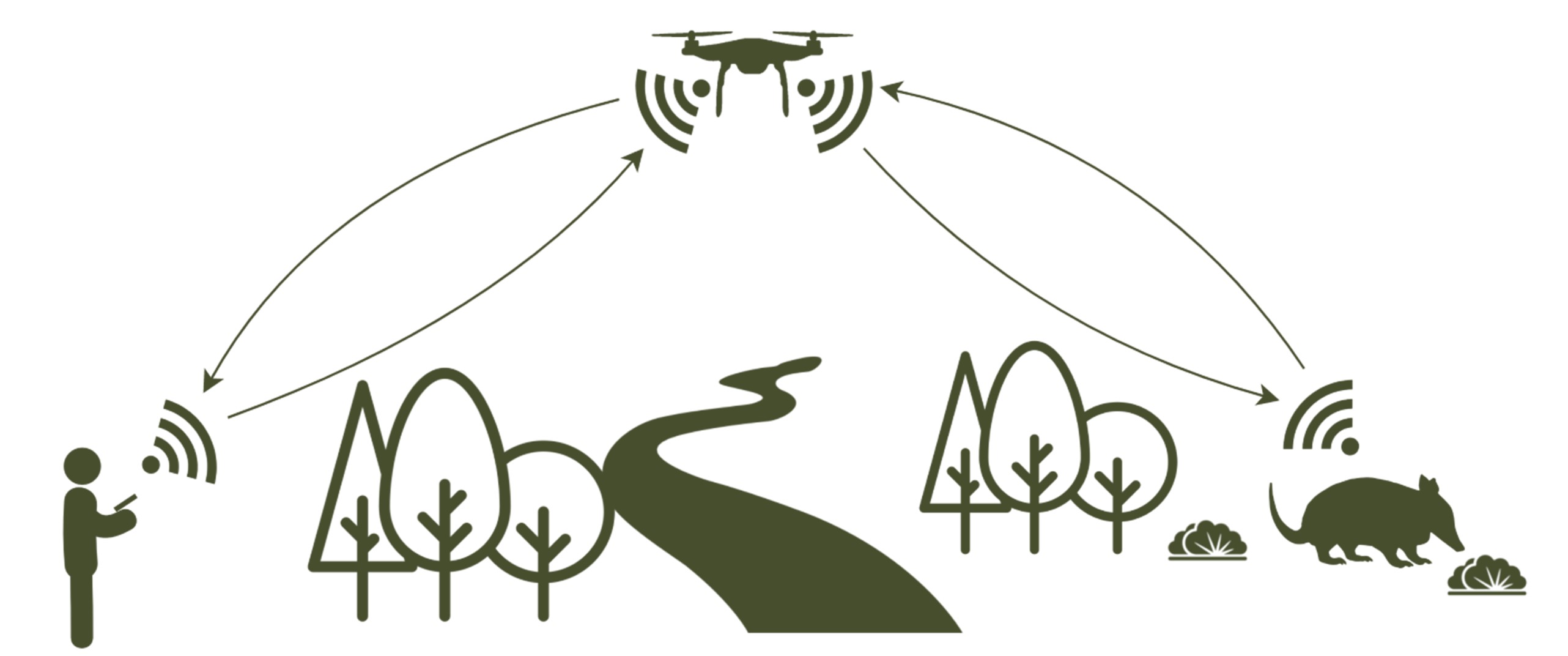
15 July 2025 9:44am
Hi Ana,
Savannah Tracking Ltd, based in Kenya, exclusively provides tracking and IT solutions for wildlife research, management and conservation projects worldwide.
We offer a range of GPS tracking models, equipped with iridium satellite or combined LoRA/Kineis data connections and we would be happy to support your needs.
Please contact us through @info@savannahtracking.com to understand your project needs in more detail and develop a bespoke solution for you.
Monitoring bat and bird collisions at MET Tower
11 June 2025 5:14am
30 June 2025 4:55pm
Hi Adam,
Have you connected with Wildlife Imaging Systems? Their thermal system can detect bird and bat activity. My company collaborates with them, and we have previously worked on developing algorithms to distinguish collisions from other activity.
Wildlife Imaging Systems
" /> <link rel=
1 July 2025 2:51pm
Looks ideal
3 July 2025 12:56am
Yes, thanks Riley and Kim. Someone suggested WIS and I am currently in discussions with them. Their system seems especially well suited for the purpose and I am hoping it works out.
I WANT TO TELL YOUR STORY
29 June 2025 10:22am
BoutScout – Beyond AI for Images, Detecting Avian Behaviour with Sensors
24 June 2025 1:46am
Feedback needed for new Tech Concepts
3 June 2025 12:43pm
11 June 2025 10:44pm
Gina- Sounds like an interesting thesis topic! I work with bioacoustics in offshore waters and I'd be happy to have a chat and provide feedback-- feel free to message me via Wildlabs.
Non-Invasive Turtle Nest Monitoring Using RTI Technology
29 May 2025 1:12pm
29 May 2025 1:18pm
6 June 2025 9:40am
We are pleased to welcome a new team member, Dr Hafiz Fazalul Rahiman from Universiti Malaysia Perlis (Unimap) to the team!
https://scholar.google.com.my/citations?user=i2f7Dz0AAAAJ&hl=en
@hafizfr .
We'll be posting our lab work soon.
9 June 2025 6:51pm
Hello, could you please elaborate on what the purpose of this project is? Thanks a lot :)
Lukas
Feedback New Tech - tracking aquatic biodiversity in offshore windfarms
7 June 2025 2:47pm
Implanted biologgers with remote data access
6 February 2025 10:57am
6 February 2025 6:33pm
Hi @Ebennitt, we do have a working solution that works with all our OpenCollar devices. We connect to sub skin implants and then send and store those readings using Bluetooth, LoRaWAN and/or Iridium satellite. We can have a quick online meeting if you like to show this. Works great!
5 June 2025 8:58pm
Hi @Ebennitt ,
I have a similar interest for the use of implantable heart rate loggers with remote data access capabilities. Have you found any solutions?
Thanks,
Courtney
6 June 2025 1:25pm
Hi Courtney
Nothing off-the-shelf. A colleague is talking to e-obs about developing this capability but I don't think it's there yet.
There are some Bluetooth-transmitting body temperature loggers being used in South Africa, I think they are through LoggerMate. However, this means getting close to the device with a BT receiver, not transmission to collar.
So in short, nothing concrete as of now I'm afraid.
All the best
Emily
Dual-/Multi-Use Technology Strategies
1 April 2025 11:46pm
15 April 2025 6:17pm
That is a great point and the current international trade climate has been making supply chain even more difficult. This also deeply affects US companies given much of the US goods manufacturing and assembly happening in China. Over the last few years, I have been seeing US hardware companies (e.g. drone platform and component OEMs) sourcing their goods from India, Turkey, Canada, and more recently in African and South American nations. Because of the last 3-to-5 years of increasingly restrictive and costly international hardware trade, there has been a emergence of specialized component manufacturers internationally. For European companies interested in providing hardware services to the US, I would suggest diversifying the supply chain beyond China. Given the current climate and trends, that added supply chain resilience may be a good idea, regardless of work with the US.
15 April 2025 7:36pm
This is more than the supply chain though. The point was the company itself cannot use any tech for anything from the 5x companies. So in my case my ISP is incompatible. Essentially I see the only companies making that kind of sacrifice are ones that want to devote themselves to defence only.
Of course. That’s US defense as a customer. European defence is fully on the table.
It’s just sad that it’s not restricted to defence. US government wildlife organisations cannot buy European tech unless that European company was pure in their eyes.
15 April 2025 8:37pm
True, the US ecosystem is a challenging space right now, for basically all sectors.
We should not let the US chaos prevent us from engaging with opportunities in other nations' multi-use markets. A company's ability and journey to tap into other markets is very unique to them (product, team, finances, infrastructure, agility), and some simply cannot adapt. There is no one size fits all (or even most) solution when it comes to multi-use strategies. It is important that we are systematic about evaluating the cost to adapt our product-service to a different market, and the value of new opportunities in that new market, without losing track of underlying conservation and social good needs.
Detecting animals' heading and body orientation
2 April 2025 10:53am
23 April 2025 8:08pm
Thank you Phil,
That sounds as if it might work (but probably with a turn trigger of around 45 degrees), and the baboon collar is well within the weight limit. Where can I find more details about the collar?
Peter
25 April 2025 10:50am
Hi Peter, Just tell me exactly what you are looking for. I have commissioned these collars from the engineer who originally made my Virtual Fence back in 2016 (still working). The aim is to have a long life while also taking regular readings (5 - 10min) so that animals cannot invade croplands or villages without being detected before they can be do any damage. We have tried to include all possible features that will be useful, while still maintaining low weight and simplicity. Hence no solar and external antennae outside the housing.
Cheers, Phil
1 May 2025 8:50am
Thanks Phil - I have e-mailed you.
Peter
Ground Truth: How Are You Verifying What Maps Show?
 Léa Smadja
and 1 more
Léa Smadja
and 1 more
16 April 2025 3:35pm
PhD position on bat acoustics and collective behavior
28 March 2025 1:05pm
Seeking Ornithologist Expertise on Quelea Bird Behavior
18 March 2025 6:20pm
Drone Photogrammetry & GIS Introduction (Foundation) Course
 Sean Hill
and 1 more
Sean Hill
and 1 more
18 March 2025 12:47pm
GPS collars for domestic dogs
20 January 2025 3:26am
20 February 2025 8:46pm
What are your parameters? Do you need yes no movement, which could be collected with an accelerometer and no lat-long data?
Movement on an XY grid once an hour within a tightly bounded area?
High resolution once per second data? Large geographic area?
Different technologies deliver ddifferent datasets. Sometimes, significantly!
10 March 2025 11:37am
Hi Stephanie, at https://Savannahtracking.com we develop and manufacture a variety of collars with sizes ranging from about 95 grams for Raptors, 200grams - 1200g for mammals, and collars for large mammals such as Elephants. We currently have collars deployed on Dingoes which are about the same size as domestic dogs, and I believe that a similar solution will be perfect for your needs.
Our GPS collars can be programmed to collect high resolution data (15-minute gps positions) with hourly uploads via iridium satellite to our server where you can view and download the data from our dedicated windows or MAC SDM platforms. We also have a view only android/ios app. All our collars have two-way satellite communication, Internet based downloading via the free accompanying Savannah Tracking data manager software, automated Google Earth links for visualization, fully user definable geo fencing allowing for point, line and polygon fences and automated app and mail alarms in case of zone violation.
Kindly reach out to us and we can discuss a bespoke solution for your tracking needs at info@savannahtracking.com
11 March 2025 3:31am
Thank you! I will follow up by email.
LiDAR for Wildlife Size Measurement
19 February 2025 11:10pm
28 February 2025 7:06pm
That’s pretty cool. It took me a while to realise that you were referring to a software package. So for others like me, here’s a link
4 March 2025 3:50am
Thanks Kim, yes we're aware that PIR has many pitfalls, especially when it comes to small things far away, which is often the case for us. But we can accept missing some detections for indexing purposes if we win in other areas like battery life, size or affordability. We're currently able to detect small birds from a useful distance with Browning trail cameras.
If I do dust off my soldering iron & actually make something it will be on a scale of 1, for dataset building proof of concept stage, not for large scale use. It would likely include a variety of sensors so I can make meaningful comparisons & propose a sensible combination. The detection part could be as simple as pixel subtraction from video footage I imagine.
4 March 2025 3:51am
Thanks Jack, that's an interesting repo.
GPS Tracker For Wildlife
27 February 2025 12:13pm
2 March 2025 11:34am
Thank you for this valuable information!
Some of the features you mentioned can be quickly added to Loko, while others require more consideration. Loko’s communication is one-way—meaning the transmitter doesn’t know whether the receiver has received the data. This design choice is made to conserve battery life. However, all data is logged internally and can be accessed via USB.
I will add GeoTIFF loading to the Loko App. Currently, Loko is not suitable for wildlife tracking because it is not waterproof, but I am working on improving its mechanical design.
Loko already supports multiple connections, allowing many transmitters to connect to a single receiver or/and multiple receivers.
Regarding encryption: What do you mean by "Encryption should not be optional"?
Are you suggesting that communication should always be encrypted by default? on loko I made it user-configurable because encrypted data packets are 32 bytes, whereas unencrypted ones are 18 bytes. A smaller data packet improves reception sensitivity and extends the transmission range.
In your opinion, what would be a reasonable price for such a device? This is very important when adding new hardware features.
Cheers,
Akio)
2 March 2025 11:42am
Hi Herhanu , appreciate for your valuable feedbacks.
- can you explain what type of release mechanisim do you mean , picture will be much helpfull . do you mean with a remote release mechanisim activates and release the tracker from crocodile collar?
- how far data need to be sent ? with a mesh network of Loko receivers wide range of area can be covered i guess.
- long distance transmission is very challanging when transmitter is very close the ground , on crocodiles especially.
for what purpose do would you use accelerometer data? is there any specific use case?
Cheers, )
2 March 2025 11:55pm
Sure, Akio! Happy to answer!
1. Yes, something like that. The few existing i guess applied already for GPS collar (literally collar) that usually for big cats and some other big mammals. There is also GPS tag for Cetaceans that can pop up, but its only remained with the animals several days CMIIW (eg see links below)
link 1
2. I guess it depends on your research questions or project objectives. But for crocodile they can have vast home range from 100 ha to 10,000 ha (depends on species). For my species, it at least uses 500 ha of area, and the farthest between points can be 15km apart.
3. accelerometer, especially in crocodile can give insight about their movement ability. As they can random as they can be - or being a statue for hours (like when you look at crocs in the zoo). Of course this would depends on your objectives.
Hope this helps!
Cheers~
How much does it cost to incorporate Machine Learning into your drone GIS analysis process?
28 February 2025 8:44am
Custom underwater case for spectrometer
17 February 2025 7:51pm
19 February 2025 10:44am
Hi Connie. You could check out Blue Robotics (bluerobotics.com) - they seem to have some options for underwater housings and cable connectors. I haven’t personally tried any, but they might be worth a look. Good luck with your project!
26 February 2025 5:09am
If you don't mind sacrificing the fiber optic cable, you could pretty much take any submersible housing (rubber coat 3D print or alike) and utilize a potted penetrator. Using something like 3M™ Scotchcast™ Potting Kit 2136 or a simple marine grade epoxy from the hardware store should work. You could even put a polycarbonate window to see inside the housing. But this is all relative to how long you want to submerge the instrument for and how reliable you want the housing to work.
For a cable like that, I would drill a hole into your underwater housing a little larger than your cable. Take a 2cm PVC pipe which is a bit larger than your hole and hotglue it onto the housing making a seal for you to fill with epoxy. Place another 1cm PVC pipe inside the housing on the other side of your hole inside the housing. Place the cable through and pour in the epoxy. You may have to force it into the PVC with some Q tips and make sure to get all the bubbles out. A simple trick is to put it under a vacuum if you are able or a less effective option is to place it on a shaker table for a few minutes. It can be a little messy. Note: the key for any penetrator is to not place strain on your cables.
Otherwise, I would suggest looking at Sexton Underwater Housing Corporation if you're looking for something custom that fits your needs. We have a few fiber optic connections on our things from them. The underwater box from bluerobotics may be helpful, but you do run into your penetrator issue and you can't see into the box. Other note when housing expensive equipment: ALWAYS have a place to vacuum test your underwater housing. This will ensure you don't have any small leaks before deployment. I'd skip bluerobotics vacuum handpump (I'd look around for a less expensive option bc it will break and they're cheaper elsewhere). I spent probably a couple days finding out that there wasn't a leak in the housing but the hand pump itself. You can get the vent plug and vacuum plug from blue and then just get a small electric pump (Diaphragm Vacuum Pump, Compact Oil-free Vacuum Pump Pressure Pump) with a gauge to save your hands and time.
27 February 2025 10:33am
Thanks so much for all the advice!! This seems very achievable. We don't mind having the fibre optic fixed in place as we planned to have a shorter one specifically for this project. Im currently waiting to hear back from Sexton but if not, we will try DIY something based on your suggestions
The 100KB Challenge!
7 February 2025 11:47am
20 February 2025 9:13am
Nice one - what kind of thing would you use this for?
~500mA peak current, it has a similar power profile as the current RockBLOCK product, in that it needs lots of juice for a for a small period of time (to undertake the transmission) we include onboard circuitry to help smooth this over. I'll be able to share more details on this once the product is officially launched!
20 February 2025 9:13am
~500mA peak current, it has a similar power profile as the current RockBLOCK product, in that it needs lots of juice for a for a small period of time (to undertake the transmission) we include onboard circuitry to help smooth this over. I'll be able to share more details on this once the product is officially launched!
20 February 2025 9:31am
Hi Dan,
Not right now but I can envision many uses. A key problem in RS is data streams for validation and training of ML models, its really not yet a solved problem. Any kind of system that is about deploying and "forgetting" as it collects data and streams it is a good opportunity.
If you want we can have a talk so you tell me about what you developed and I'll see if it fits future projects.
All the best
Using LoRa for a sensor network: recommendations
5 February 2025 6:06pm
11 February 2025 12:22pm
@pchwalek Thank you for the response! The project which I am currently developing is exactly as you mentioned in the LoRa use case: a parent unit in the centre of a conservation area which is to recieve one way packets from child sensor units spread around the perimeter of the protected area. The difference in LoRa vs LoRaWAN is much more clear to me now, and I'll try me path with LoRa based on the feedback :)).
If you happen to have resources to recommend in terms of developing and using LoRa, I'd be glad to have your recommended references as a starting point.
Best regards,
Kristián
11 February 2025 11:59pm
@kristian.cuervo happy to help. Make sure to take note of @Eric24's comment about potential packet losses. Having LoRaWAN could make that problem a bit nicer, although I don't have enough experience with error detection via LoRaWAN, but you can also just retransmit packets manually via LoRa or if you have the power and bandwidth budget, just retransmit redundant packeted.
As for resources, I would just Google it but starting with one of the LoRa boards from SparkFun/Adafruit or equivalent is recommended.
12 February 2025 8:53am
@Eric24 The use case is as I wrote to Patrick: "a parent unit in the centre of a conservation area which is to recieve one way packets from child sensor units spread around the perimeter of the protected area.". The packets are simple pings on whether the sensor wants to send an alarm to the rangers in the conservation area and a percentage accuracy that e.g a poacher is detected on the perimeter.
The delivery guarantee requirement is thus very high, but it is not necessary to send signals often if an event is not occuring (which should not be more frequent than once a day at max). Perhaps the delivery guarantee could be fixed by simply sending an alarm signal many times? Furthermore, it is not foreseen that the sensors need to be dynamically reconfigured.
Thank you for the response and insight in your development process! I'm planning to use very similar modules as you described.
Tropical fieldwork funding! Up to $15,000 -Susan Wojcicki Fellowship
10 February 2025 7:01pm
Low-power acoustics systems
27 January 2025 1:44pm
10 February 2025 10:42am
10 February 2025 10:49am
Hi Julia,
Thank you for your reply. Your work on connected acoustic recorders sounds very interesting, and we’d love to learn more about your application and the enhancements to Bugg. We’ll contact you soon to arrange a discussion.
Looking forward to it!
Thank you,
Best regards,
Sebastian
10 February 2025 10:52am
Hi Lucille,
Thank you for your reply! We’d be really interested in learning more about your developments. We’ll contact you soon to arrange a discussion.
Thank you.
Best regards,
Sebastian
acoupi: An Open-Source Python Framework for Deploying Bioacoustic AI Models on Edge Devices
7 February 2025 1:39am






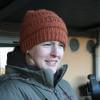














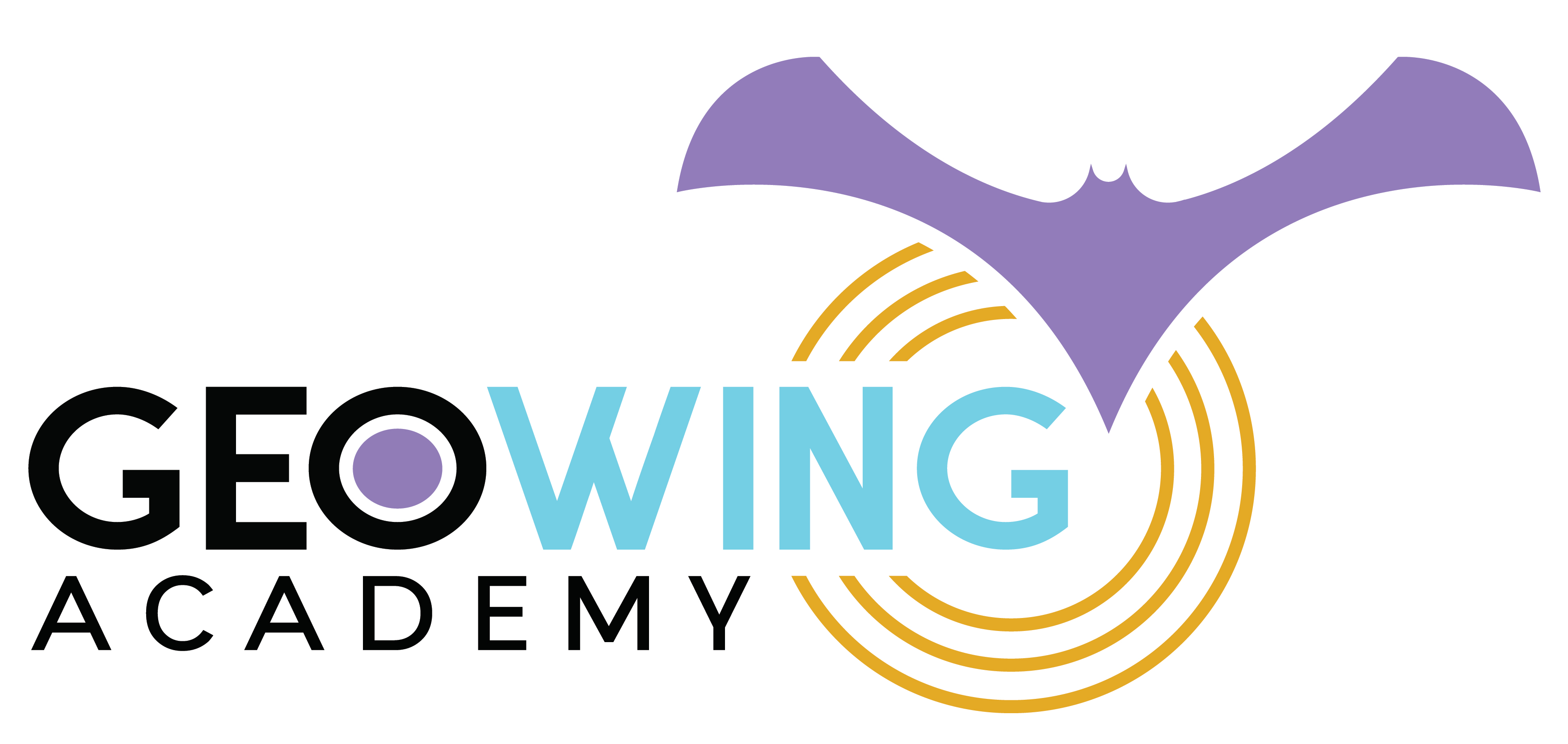
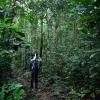



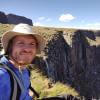






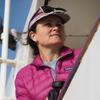


























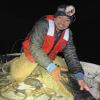





11 July 2025 7:31am